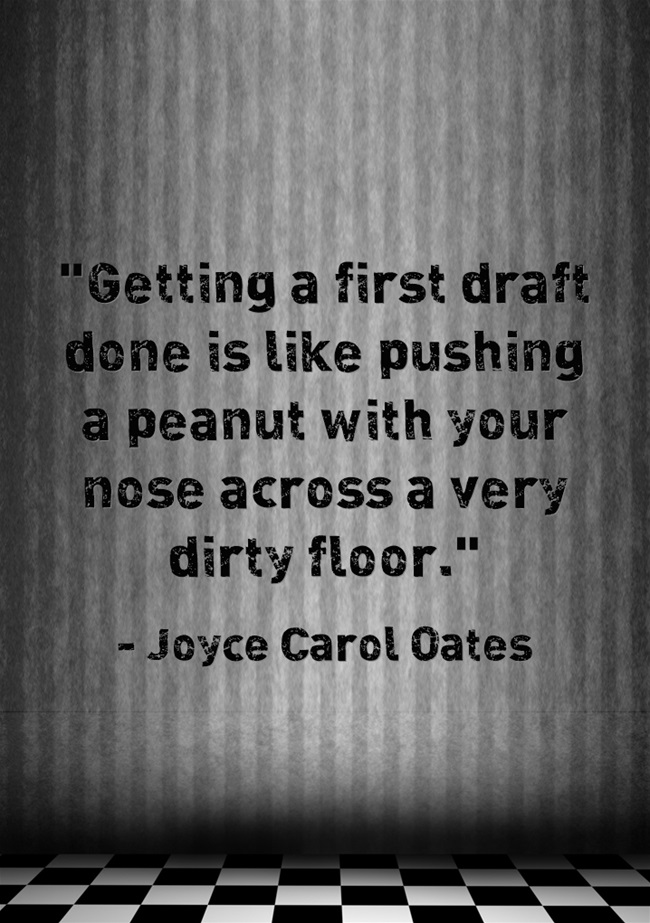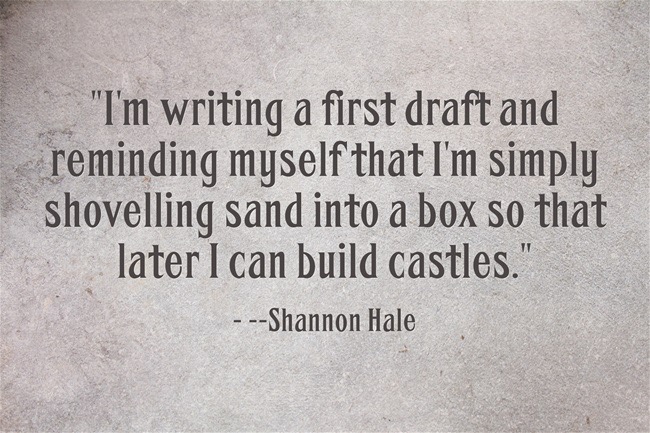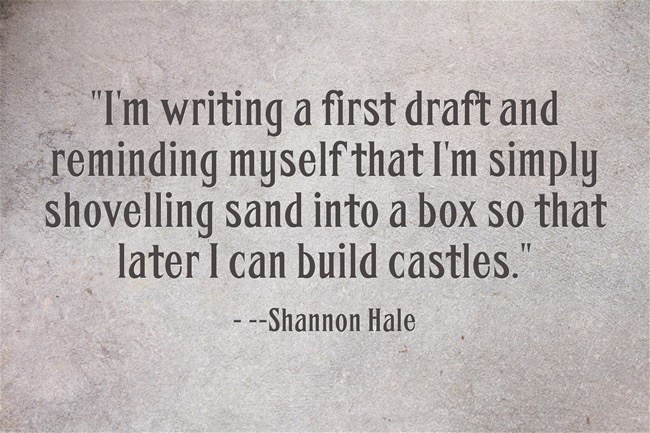First drafts. Love them or hate them, we all have to do them. These two tips may help you get yours done.
Haters Gonna Hate
Plenty of writers find first drafts a huge chore. Joyce Carol Oates, quoted below, seems to fall into the hater category.

No doubt about it, first drafts are hard work. Forming something out of nothing is always going to strain the brain. Even God needed a day of rest after a bout of creativity, right?
Experience First (Draft) Love
Other writers find the process energising. I happen to fall into that category. Getting lost in my imagination is such a buzz. I can “see” the new story unfold in my head, and it’s as if I’m in a cinema, watching the action. Except, in this case, I’m not a passive viewer. I supply the choices and make the decisions. Maybe it’s more like playing a video game.
I have moments of familiarity with the JCO’s peanut analogy, but over all, writing a first draft for me is good fun.
Loving the process helps get it done, but even first-draft haters can streamline and smooth the process. Here are a couple of ideas to try out on your next first draft.
Plotters, Pantsers & Somewhere In Between
The terms plotters and pantsers refer to two styles of writing attack. Pantsers (who write by the seat of the pants) “make up” their story as they go along. For them, the first draft is both a step of faith and a feeling of the way in the dark. Plotters, on the other hand, figure it all out before they begin. Their imaginings are shaped and formed into an outline with a beginning, a middle, and an end.
I can’t help wonder if the first-draft haters are pantsers or plotters. Maybe pantsers find first drafts hard because their free-range characters are calling the shots and running amok. On the other hand, plotters might find a first draft about as invigorating as filling in an endless bureaucratic form.
As for me, I’ve decided to call myself a plotting pantser (or a pantsing plotter. I’m not sure which.) I spend ages doing research, writing backstory, and forming an in-depth outline. When I finally begin writing, I use the outline as a guide, but I don’t let it thwart my characters’ intentions. If I suddenly find my characters veering out of the outline’s parameters, I write on and see what happens. The results are usually interesting but not always fruitful.
My outline and first draft are pliable matter, not rigid objects. Shannon Hale’s quote sums it up perfectly.

A pile of sand, so malleable, so impermanent–so full of potential–is a wonderful analogy for a first draft. Shovelling sand–building that first draft–is about discovering the lay of the land, patting down the rough patches, and setting the foundations.
So, my first tip for learning to enjoy first drafts is to be playful (think sandbox) and see it as experimental. It is a chance to discover your story’s bones. If you’re a pantser, try some plotting: Lay out the major turning points and pinpoint where you’re heading. If you’re a diehard plotter, fasten your britches and see what happens for a few scenes.
Beginning with the Ending
Tolkien said, “Not all who wander are lost,” and while that’s true, it makes a useless maxim for a writer who’s trying to complete a first draft. Wandering may have some use in generic creativity, but it won’t get a draft done. At least not without a full surround sound and vivid Technicolour experience of the peanut + dirty floor + nose scenario above.
A destination fixes the problem of aimless wandering. To put it simply, know the end. If you can’t imagine anything, at least have that mind-blowing last scene clear and bright in your mind.
Learning from the Masters
I read a book in 2014 that rocked my writer’s brain. A Prayer for Owen Meany by John Irving was so wondrous that I was winded. Seriously, my mojo hid out in a dark cave in the high country and whimpered and licked its wounds for a month. I was left with one resounding question: “How did Irving do it?”
I found my answer on a podcast that featured John Irving. It turns out he starts at the end. Yep. It’s that simple. John Irving wrote the end first and moved on from there.
The miracle of Owen Meany didn’t just “happen.” The abracadabra and poof of smoke came about by starting with the last scene. He discovered everything that his protagonist needed to learn through the rest of the (epic) story. The book’s power came from the pervasive sense of doom and the miraculous, both of which were foreshadowed in the opening lines, developed through the middle, and culminated in the unforgettable ending.
My second tip for learning to enjoy first drafts is to begin at the end. Not only will it give your story momentum and direction, but it will also inform the whole process, leading your imagination to create learning experiences for your characters.
These tips won’t change the fact that first drafts are hard work, but they may motivate the writer through the toil. All the best with your finishing your draft. Feel free to share your tips in the comments.
Check out this post by Christopher Makar for some more handy-dandy tips.

Leave a Comment